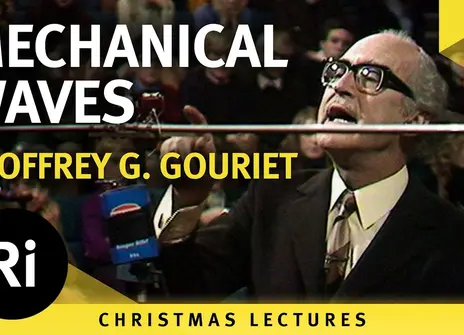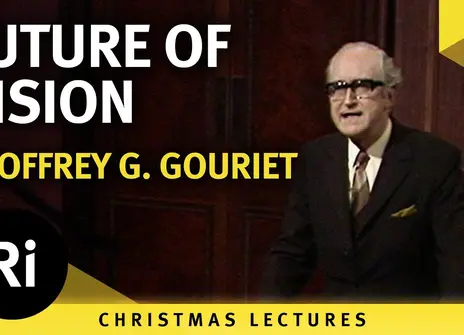Lecture 2 – Getting rid of the wires
In this second Lecture, Gouriet fist demonstrates the behaviour of mechanical waves; how they are produced, propagate and how they interact with other waves. He then goes on to show how the mechanical waves behaviour is analogous to that of electromagnetic waves.
Now, with a more intuitive understanding of electromagnetic waves, Gouriet uses a number of methods to produce and transmit radio waves that can be translated to information, like for example switching on and off a lamp at a distance can pass on information in the form of Morse code.
Finally we learn how the Earth's atmosphere can be utilized to our advantage to transmit radio waves across long distances.
About the 1972 CHRISTMAS LECTURES
In his 1972 CHRISTMAS LECTURES, Geoffrey G Gouriet explores the past, present and future of radio communications, and the science that lies behind it.
Radio waves are all around us, continuously being produced and received through man-made devices enabling us to connect with each other and communicate information. Geoffrey Gouriet, through the course of six Lectures, takes us on a journey through history from the first telephone to the 'Viewphone' and with the aid of exciting demonstrations, he explains how devices in our house like the TV translate broadcasted signals into moving pictures.
Gouriet begins with an introduction to electromagnetic waves and the principle behind it as well as how electricity can be used to transmit information.
We then learn how we can get rid of the wires and transmit information through the 'ether' using radio waves and utilizing the layers of the Earth's atmosphere to reach distant locations; the basis of radio and TV broadcasting.
Finally, Gouriet demonstrates how TVs and radios work and how the broadcasted signal is translated. In his last lecture, he gives us a 'vision of the future' outlining how different technologies were currently (then) in development and he even sets up a live broadcast using small dishes from within the lecture theatre.

